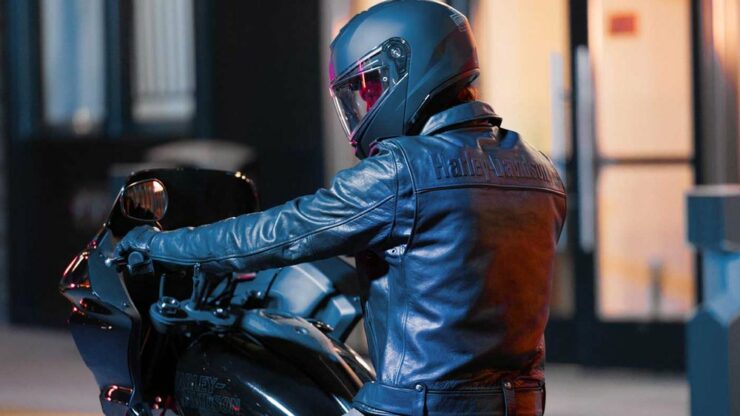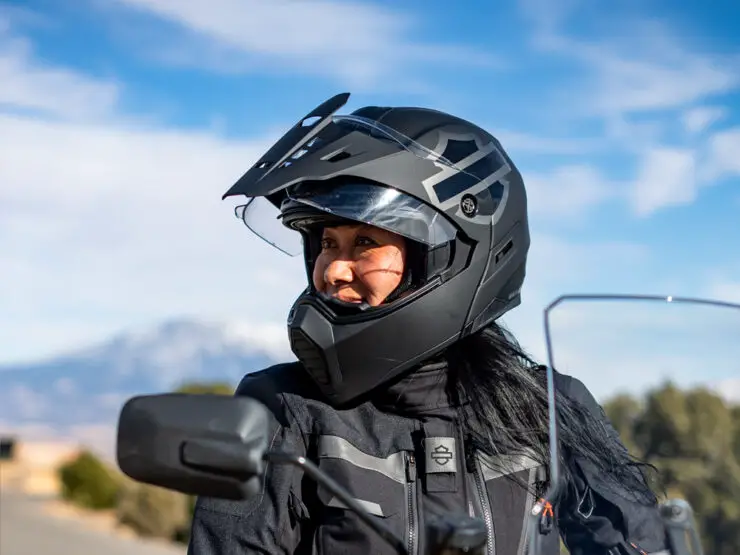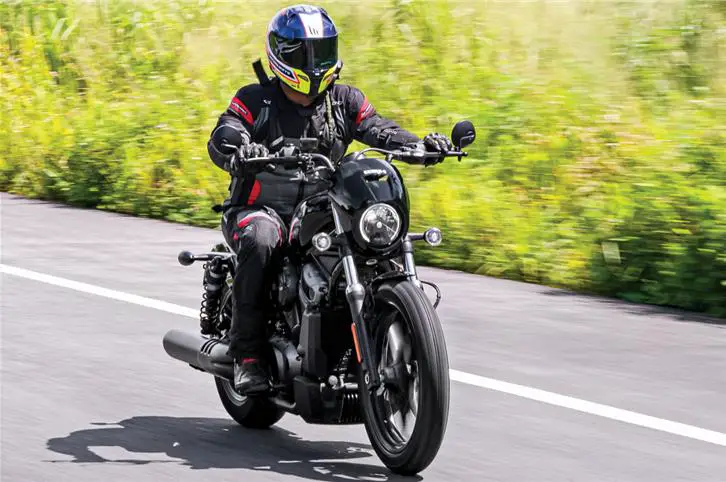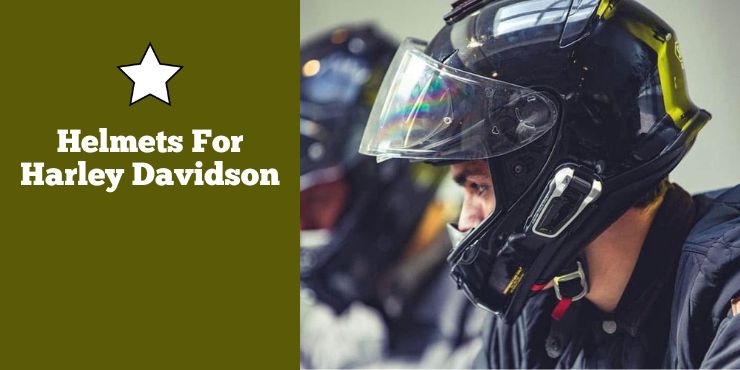The thunderous roar of a Harley-Davidson engine, the allure of the open road, and the exhilarating feeling of freedom are hallmarks of the Harley-Davidson motorcycle experience. While bikers embrace the thrill and adventure that comes along with owning a Harley, it is important to prioritize safety, especially when it comes to wearing a helmet. You must be protecting yourself and your head whenever you are out on the road and driving your bike. When dealing with helmets, there are a set of questions you would have in your mind.
Helmets for Harley-Davidson riders include various styles such as full-face, modular, half-helmet, and open-face, chosen based on preference for protection and comfort.
In this article, you will get to know the answers to important questions and protect yourself with the best helmets to Harley-Davidson riders.
Are there any laws that require helmets for Harley-Davidson riders?
A helmet serves as the first line of defense for a Harley-Davidson biker, protecting the most important asset – their life. In the event of an accident or collision, a properly fitted helmet will significantly reduce the risk of severe head injuries or even fatal outcomes. The sturdy construction and impact-absorbing materials of modern helmets are designed to cushion the head and minimize the impact force on the skull, hence, safeguarding the rider’s well-being.
>>> Click here to read our review of the Best Helmet For Harley-Davidson <<<
In most states, it is legal to ride a Harley-Davidson bike without a helmet as long as you are older than 21. There are 18 states in the United States including the District of Columbia that currently have universal helmet laws. This means that the rider must wear a helmet irrespective of their age. Most states need riders to wear DOT-approved helmets, which can range widely in quality and cost.
Wearing a helmet while riding doesn’t impact your motorcycle insurance rates directly. However, helmets will reduce the severity of the injury and can potentially save you from having to file claims that will cost you even more later.
In three states in the USA, motorcycle helmets are optional. 29 states need young bikers under a certain age and varying age limits to wear a helmet. Meanwhile, there are 18 states that have universal motorcycle helmet laws requiring riders of all ages to wear helmets. The same helmet laws apply to other 2-wheeled vehicles, such as mopeds and scooters.

States that have universal helmet laws may also have cheaper medical-related claim costs. This can often reduce the insurance costs, although the savings have very little (if any) impact on riders. Riders don’t typically decide which state to live in depending on where they’re able to save most on motorcycle insurance. Whatever additional savings exists is a nice little perk to people who happen to live in a state that has universal helmet laws.
READ MORE – Are there any laws that require helmets for Harley-Davidson riders?
What type of helmet should you get your for Harley-Davison bike?
When it comes to hitting the highways and open roads on your Harley-Davidson bike, safety should always be the top priority. One of the important pieces of protective gear for a biker is a high-quality helmet. However, with so many helmet options available, choosing the right helmet can be quite a daunting task.
First, you need to prioritize helmets that meet the safety standards and certifications. Look for helmets that are DOT certified (Department of Transportation), indicating that they have undergone rigorous testing and meet the minimum safety requirements. Moreover, certifications like ECE (Economic Commission for Europe) or Snell (Snell Memorial Foundation) can provide further assurance of helmet quality and performance.
You must consider the type and style of helmet that perfectly suits your preferences and riding needs. Some of the common helmet types are full-face helmets, open-face helmets, half helmets, and modular helmets. Choose the style of helmet that provides the level of protection and comfort you desire while aligning with your personal style and riding preferences.
Proper fit is also important for both safety and comfort. A helmet must fit snugly on your head without being too tight or too loose. It should not move or shift when you shake your head or during wind gusts. Try on different sizes of helmets and different models to find the one that provides a secure fit. Pay close attention to comfort features like padding, ventilation, and adjustable straps as they can enhance your riding experience.
Helmets are constructed using different materials, including carbon fiber, polycarbonate, fiberglass composite, or a combination of these. Each material has its advantages in terms of weight, strength, and impact resistance. Consider the trade-offs between weight, durability, and cost to select a helmet that meets your specific requirements.
You can also go for helmets that have certain additional features. Modern helmets often come with added features designed to enhance safety and convenience. Some of the additional features found in helmets include visors, Bluetooth integration, reflective elements, and more.
Some helmets come with built-in sun visors or detachable shields that provide protection against glare, wind, and debris. Adequate airflow and ventilation will keep you cool and prevent fogging. Some helmets also come with Bluetooth integration and offer built-in communication systems for hands-free phone calls, music streaming, or rider-to-rider communication. Another feature in some helmets includes reflective elements. Helmets with reflective accents or high-visibility colors increase your visibility to other vehicles.
READ MORE – What type of helmet should you get your for Harley-Davison bike?
How to make sure that the helmet you buy fits you properly?
A properly fitted helmet will not only provide optimal protection but it will also ensure comfort during long rides. Here are some of the steps that will help you ensure that your Harley-Davidson helmet fits you securely and snugly for a safe and enjoyable riding experience.
#1.Measure your head
Before purchasing a helmet, you should measure the circumference of your head using a flexible measuring tape. Start above your eyebrows and wrap the tape around the widest part of your head. Note down the measurement in inches or centimeters as it’ll help you determine the appropriate helmet size.
#2.Try different brands and sizes
Helmet sizes can vary across different brands and models, so it is important to try on different helmets from various manufacturers to find the best fit. Visit a reputable motorcycle gear store and try helmets in the size range that corresponds to your head measurement. Remember that each brand might have its own shape and fit characteristics, so you shouldn’t be discouraged if one brand does not work for you. Simply try other brands until you find the right fit.
#3.Check for snugness
When you are trying on a new helmet, it must fit snugly on your head without feeling overly tight or causing discomfort. Follow these steps for assessing the fit of the helmet –
- The helmet’s interior padding must come in contact with your entire head without any noticeable gaps or pressure points
- The helmet needs to sit level on your head, with the top edge positioned just above your eyebrows
- Use the helmet’s retention system or chin strap to secure it
- The chin strap must be comfortably snug but not overly tight, allowing you to open your mouth and move your jaw freely
- With the helmet secured, you should try to move your head from side to side and upon and down
- When moving your head, your helmet must stay in place without any excessive movement or sliding
- Shake your head to ensure that the helmet remains secure and doesn’t wobble
#4.Check for proper sizing
Aside from the overall fit, you must also consider certain factors to make sure that the helmet is the right size. Here are some of them –
- The helmet needs to exert even pressure on all areas of your head without creating any uncomfortable pressure points
- Check the cheek pads, making sure they provide a snug but not overly tight fit around your cheeks
- The helmet’s interior lining must mold to the shape of your head over time, delivering a custom fit that is neither too loose nor too tight
#5.Consider different helmet shapes
Bikers have varying head shapes and helmets are designed to accommodate different shapes. Some individuals have round heads while others may have intermediate oval or long oval head shapes. Try out different helmet models and brands until you find one that matches your head shape, ensuring a more secure and comfortable fit.
#6.Test the visibility
Wearing a helmet shouldn’t compromise your visibility or comfort. Make sure that the helmet doesn’t obstruct your peripheral vision and the eye port allows for a clear view of the road. Moreover, consider features like padding thickness, noise reduction, and ventilation to determine your comfort level during rides.
READ MORE – How to make sure that the helmet you buy fits you properly?

Are there specific safety standards for Harley-Davidson helmets?
In states where a motorcycle helmet is mandatory to ride legally, the law states that the helmet must be DOT-approved. This means the helmet needs to comply with the Department of Transportation’s standards. There are many brands that sell full-face and half-face helmets that meet the standards set by DOT. However, full-face helmets are known to offer superior protection against serious accidents.
Snell, DOT, and ECE 22.05 are three common standards in motorcycle helmet construction. Each entity has its own rules for energy absorption, penetration, resistance, and retention.
Non-DOT motorcycle helmets might still protect you to an extent. However, you’ll have to check your state’s regulations for determining whether you’ll be driving legally if you’re wearing one. Moreover, many states also require the biker to wear eye protection when driving on the road.
If you are concerned about finding the safety gear to wear when driving, you might want to consider finding a motorcycle helmet that is Snell-approved as well. Snell-approved helmets typically cost more than those that are only DOT-approved. This is the case because Snell implements standards that are more rigorous than DOT standards.
It is also a safety standard to avoid buying used helmets. This is tricky because it could be difficult to gauge exactly how much wear and tear the helmet has already been through. Brand-new helmets tend to cost more but the difference is less than what you will end up saving in medical costs for head injury.
Wearing a helmet that fits snugly and appropriately can be almost as important as the quality of the helmet. A motorcycle helmet must fit snugly around your entire head. As different styles and brands of helmets can come with different quirks in terms of size, it is recommended that you should try some of them in person before purchasing.
READ MORE – Are there specific safety standards for Harley-Davidson helmets?
What are the different styles of helmets for Harley-Davidson?
When driving a Harley-Davidson bike, not only is safety important but so is expressing your style and personality. Your choice of helmet plays a vital role in both protection and personal expression. Harley-Davidson bikers have a wide array of helmet styles to choose from, each offering its own blend of functionality, attitude, and aesthetics. Here are the different helmet styles for Harley-Davidson riders, allowing you to ride with both style and safety.
#1. Full-face helmets
Full-face helmets offer the most comprehensive coverage and protection for Harley-Davidson bikers. These helmets enclose the entire head, including the chin and face. They offer excellent impact protection, shield against wind and debris, and offer better noise reduction compared to other styles. Full-face helmets are typically favored by bikers seeking maximum safety and a sleek streamlined appearance.
#2. Open-face helmets
Open-face helmets or also referred to as ¾ helmets cover the top, back, and sides of the head. Only the face is left open in these helmets. These helmets offer a classic, retro look while offering sufficient protection for riders. An open-face helmet is popular among Harley-Davidson bikers who value increased airflow, a wider field of vision, and the freedom to feel the wind on their face during rides.
#3. Half helmets
Half helmets or also known as skull caps or brain buckets cover just the top of the head, leaving the face and ears exposed. These minimalist helmets offer the least coverage but provide a sense of freedom and a rebellious aesthetic. Half helmets are often favored by bikers who prefer a minimalist design and enjoy a greater sense of openness while riding.
#4. Modular helmets
Modular helmets offer a combination of features from both full-face and open-face helmets. They feature a hinged chain bar that can be flipped up, allowing bikers to enjoy the convenience of an open-face helmet or the protection of a full-face helmet. These helmets offer versatility, enabling riders to adjust their level of coverage based on riding conditions and personal preferences.
#5. Dual-Sport helmets
Dual-Sport helmets or also known as adventure helmets are designed for bikers who enjoy both on-road and off-road adventures. These helmets typically feature a hybrid design, combining the best features of full-face helmets with off-road helmets. They offer a larger vision for better visibility, enhanced airflow for off-road use, and a robust construction that can easily withstand the rigors of both environments.
#6. Customized helmets
Harley-Davidson bikers often showcase their personal style through customized helmets. Customization can involve adding unique paint jobs, graphics, decals, or personalized design that reflects individuality and creativity. Customized helmets allow riders to stand out from the crowd and make a bold statement while riding their Harley.
READ MORE – What are the different styles of helmets for Harley-Davidson?
What types of ventilations are available on helmets for Harley-Davidson?
When cruising on a Harley-Davidson bike, comfort will be important for a truly enjoyable ride. Helmet ventilation plays a key role in keeping riders cool, reducing fogging, and maintaining overall comfort during long journeys. Harley-Davidson bikers have a range of helmet ventilation options to choose from, each designed to enhance airflow and optimize your riding experience.
Ventilation channels in a Harley-Davidson helmet
Many Harley-Davidson helmets come with ventilation channels, also known as vents, placed strategically throughout the helmet’s shell. These vents allow airflow to circulate and dissipate heat, keeping your head cool and reducing sweat buildup. The most common ventilation channels include –
- Top vents – These are located on the top of the helmet and these vents draw in fresh air and distribute it across your head, providing maximum cooling
- Chin vents – These are positioned at the front or lower part of the helmet and they direct air toward your mouth and chin area, reducing fogging and enhancing breathability
- Exhaust vents – These are typically found at the rear of the helmet and they expel warm air and create a continuous airflow system, improving overall ventilation
Adjustable ventilation systems
Some helmets also offer adjustable ventilation systems, allowing the biker to customize the amount of airflow based on their preferences and riding conditions. These systems often feature sliders or switches that control the opening and closing of vents. With adjustable ventilation, you’ll be able to fine-tune the airflow to match the temperature and weather conditions, ensuring optimal control and preventing overheating.
Intake and exhaust ports
Intake and exhaust ports work together and create a flow of air within the helmet. Intake parts are typically located at the front or sides of the helmet and they bring in fresh air. Meanwhile, exhaust ports are present at the rear and they expel warm air. This continuous exchange of air helps maintain a cool and comfortable interior temperature, especially during hot rides or in stop-and-go traffic.
Ventilation padding and liners
Some helmets also incorporate ventilation padding and liners designed for improving airflow and moisture management. These features typically include moisture-wicking materials and mesh linings that enhance breathability and keep sweat at bay. Ventilated padding and liners promote air circulation and help regulate temperature, preventing excessive sweating and discomfort.
Ventilation enhancements
In addition to standard ventilation features, helmet manufacturers also incorporate additional enhancements to optimize airflow and comfort. Some helmets come with built-in wind deflectors that redirect airflow, reducing wind noise and turbulence while increasing overall comfort.
Chin curtains help reduce wind noise and prevent cold air from entering the helmet. Removable chin curtains offer the flexibility to adjust ventilation based on your preferences. Helmets with adjustable visors will allow you to fine-tune the visor’s position, allowing you to optimize airflow and minimize fogging.
READ MORE – What types of ventilations are available on helmets for Harley-Davidson?
Are there any special features of helmets for Harley-Davidson bikers?
Helmets aren’t just a safety requirement but also an opportunity for Harley-Davidson riders to showcase their style and enjoy additional features that enhance the riding experience. Harley-Davidson understands the importance of incorporating safety and personal expression, which is why it offers a range of helmets with special features designed to provide optimal protection, comfort, and convenience. Here are some of the special features available in Harley-Davidson helmets, allowing riders to prioritize safety while at the same time embracing their unique style.
#1. Integrated Bluetooth communication
Stay connected while on the road with Harley-Davidson helmets that come equipped with integrated Bluetooth communication systems. These helmets feature built-in speakers and mics, allowing riders to make hands-free phone calls, listen to music, receive GPS directions, and communicate with other riders in their group. Bluetooth connectivity also ensures seamless communication without compromising safety or the need to handle external devices.
READ MORE – Are There Any Accessories Available For Helmets For Harley-Davidson?
#2. Drop-down sun visors
Harley-Davidson helmets often come with drop-down sun visors or internal sun shields or retractable shades. These visors can be lowered or raised easily to provide instant protection against bright sunlight, reducing glare, and enhancing visibility. Bikers can enjoy the convenience of transitioning from bright sunlight to shaded areas without the need for additional sunglasses or visors.
#3. Quick-release chin straps
Convenience and ease of use are necessities in Harley-Davidson helmet designs. Quick-release chin straps allow for effortless securing and removal of the helmet. With just a simple push of a button or slide of a buckle, the rider will be able to put on or take off their helmets without struggling with traditional strap systems. Quick-release chin straps tend to save time and ensure a secure fit every time.
#4. Advanced shell materials for added safety
Some Harley-Davidson helmets also incorporate advanced shell materials to enhance safety and durability. These materials often include lightweight yet strong compounds like fiberglass or composite blends. Such shells offer high-impact resistance while keeping the helmet lightweight, reducing fatigue during long rides.
#5. Removable and washable liners
To maintain freshness and cleanliness, many Harley-Davidson helmets also feature removable and washable liners. These liners are typically made using moisture-wicking fabrics that help keep riders cool and dry by absorbing and dissipating sweat. Being able to remove and wash the liners will allow for easy maintenance and ensures a hygienic interior for prolonged use.
#6. Custom paint and graphics
Harley-Davidson offers an impressive range of helmet designs, including those with custom paint and graphics. These helmets allow bikers to express their unique style while also being able to represent their individuality and passion for the open road. Custom paint and graphics options ensure that bikers can match their helmets with their Harley-Davidson bikes or showcase their preferred aesthetic.
READ MORE – Are there any special features of helmets for Harley-Davidson bikers?
Are there any benefits to wearing a helmet for Harley-Davidson?
For Harley-Davidson bikers, the prospect of the open road presents a sense of freedom and exhilaration. But before you can drive, it is important to prioritize safety while still enjoying the thrill of the ride. Helmets are a vital piece of protective gear that you must wear before you take your bike out for a spin. Wearing a helmet offers a lot of benefits for Harley-Davidson bikers such as –
#1. Head protection
The most obvious benefit of wearing a helmet when driving is the protection it provides to your head. In the event of an accident or collision, a helmet will act as a vital barrier between your head and potential impact.
They are designed to absorb and distribute the force of an impact, reducing the risk of traumatic brain injuries, skull fractures, and other head injuries. Helmets are a crucial line of defense, minimizing the severity of injuries and potentially saving lives.
#2. Impact absorption
Modern helmets are engineered with advanced materials and construction techniques to enhance impact absorption. They often feature a protective outer shell made from durable materials like carbon fiber, fiberglass, or composite blends. Internally, they include foam liners designed to absorb and disperse energy upon impact. These features significantly reduce the risk of head and brain injuries by minimizing the force transferred to the rider’s head.
#3. Shields against debris and external elements
Riding a Harley-Davidson bike exposes bikers to various elements, including wind, rain, dust, insects, and road debris. Helmets act as a protective shield, preventing the external elements from directly contacting the rider’s face, eyes, and head.
A properly fitted helmet with a face shield or visor will keep your vision clear, protect your eyes from debris, and shield your face from sunburn, windburn, or harsh weather conditions.
#4. Improved visibility
Many helmets designed for Harley-Davidson bikers incorporate features that enhance visibility, such as reflective surfaces or integrated LED lights. These features help make riders more visible to other vehicles, especially in low-light conditions or at night. Improved visibility significantly reduces the risk of accidents caused by other drivers failing to notice bikers on the road.
#5. Noise reduction
Harley-Davidson bikes produce a lot of noise during operation. Wearing a helmet with proper padding and insulation will help reduce wind noise and engine sounds, providing a quieter and more comfortable riding experience. Lower noise levels contribute to better concentration and less fatigue during long rides.
#6. Legal compliance
In many states and jurisdictions, wearing a helmet is a legal requirement for motorcycle riders, including Harley-Davidson bikers. Wearing a helmet ensures compliance with local laws, helping bikers avoid legal penalties, fines, or restrictions on riding privileges. Adhering to these regulations helps demonstrate responsible and law-abiding behavior as a biker.
READ MORE – Are there any benefits to wearing a helmet for Harley-Davidson?

How much should I expect to pay for a helmet for Harley-Davidson?
The cost of a motorcycle helmet varies significantly based on your preferred style, the safety standards it meets, and whether you wish to include any additional features, such as Bluetooth integration.
READ MORE – How much should I expect to pay for a helmet for Harley-Davidson?
For a standard DOT-approved motorcycle helmet, the cost of the helmet typically starts at around $125. However, a motorcycle helmet that is also Snell-approved and has MIPS energy management (distributes impact in case of a fall) and features like Bluetooth speakers and more can cost you more than $500.
Read more about essential Gear for Harley-Davidson Riders here >>>

